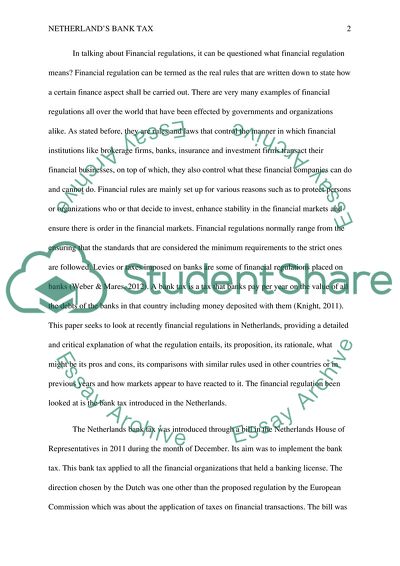Cite this document
(Financial Regulation of Netherland Bank Essay Example | Topics and Well Written Essays - 2000 words, n.d.)
Financial Regulation of Netherland Bank Essay Example | Topics and Well Written Essays - 2000 words. Retrieved from https://studentshare.org/finance-accounting/1818916-write-a-policy-report-providing-a-critical-assessment-of-a-recently-introducedmodifiedproposed-financial-regulation
Financial Regulation of Netherland Bank Essay Example | Topics and Well Written Essays - 2000 words. Retrieved from https://studentshare.org/finance-accounting/1818916-write-a-policy-report-providing-a-critical-assessment-of-a-recently-introducedmodifiedproposed-financial-regulation
(Financial Regulation of Netherland Bank Essay Example | Topics and Well Written Essays - 2000 Words)
Financial Regulation of Netherland Bank Essay Example | Topics and Well Written Essays - 2000 Words. https://studentshare.org/finance-accounting/1818916-write-a-policy-report-providing-a-critical-assessment-of-a-recently-introducedmodifiedproposed-financial-regulation.
Financial Regulation of Netherland Bank Essay Example | Topics and Well Written Essays - 2000 Words. https://studentshare.org/finance-accounting/1818916-write-a-policy-report-providing-a-critical-assessment-of-a-recently-introducedmodifiedproposed-financial-regulation.
“Financial Regulation of Netherland Bank Essay Example | Topics and Well Written Essays - 2000 Words”, n.d. https://studentshare.org/finance-accounting/1818916-write-a-policy-report-providing-a-critical-assessment-of-a-recently-introducedmodifiedproposed-financial-regulation.


